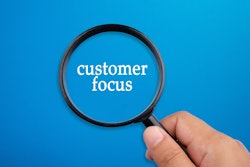By David Kalvelage, MacKay & Company
As a dealer or parts distributor, is your parts marketing strategy a “one size fits all” strategy for customers? While this strategy may be effective for higher volume parts, such as oil filters, brake parts or emissions components, a more targeted parts marketing strategy based on specific fleet attributes could help you sell more parts.
How well do you know your customers? Do you know your fleets’ vocations, their trade cycles, the average age and mix of vehicles by weight class and the type of service work outsourced? Understanding this information about your fleet customers enables you to tailor a parts strategy more likely to increase parts sales.
At a minimum, you should know your customers’ businesses. Is it a construction fleet, long-haul heavy- duty fleet, refuse hauler or a short-haul fleet with short lanes and high volumes? Each has its own operating characteristics that affect parts needs.
MacKay & Company calculates average annual parts spend per vehicle. Parts consumption varies considerably by vocation, weight class and vehicle age. The average annual parts spend (excluding tires and lubricants) for a Class 8 truck is about $6,500 or around $0.09 per mile but can vary from as low as $2,700 per year for government-owned trucks to $8,700 per year for a for-hire carrier Class 8 truck.
Along with differences in annual parts spend, the fleets’ vocations can determine what parts are consumed most frequently. For example, a refuse fleet will consume more brake parts than a construction fleet. Knowing your fleets’ vocations can help you market the specific set of parts required by each fleet.
Understanding your customers’ trade cycles and average vehicle age are also important. A fleet that always buys new vehicles and trades them after four or five years has a different set of parts needs than a fleet that buys used vehicles. If your fleet customer buys used vehicles, are you focusing on those longer life parts that will be coming up for replacement? If you know the ages of the fleet’s vehicles, you can track when specific parts likely are to be replaced and proactively stock and sell those parts. For example, engine and transmission parts add significantly to total maintenance costs in years seven to nine.
Does the fleet consistently trade a percentage of its vehicles annually, thus keeping its vehicle average age consistent or does it purchase vehicles based on how well its business has done that year? For a fleet with a weaker balance sheet that is towards the end of their vehicles’ trade cycles, the decision whether to extend trade cycles often will depend on the strength of the current financial year. If you expect the fleet to extend its trade cycle, then you also know the fleet will incur additional maintenance costs, giving you the opportunity to make additional parts sales.
Do you know your customers’ mix of vehicles by weight class? If primarily medium duty, the annual parts consumption equation changes considerably based on lower annual miles and different driving conditions. Annual parts spend for medium-duty vehicles can be as much as 40 to 50 percent lower than heavy-duty trucks.
Finally, understanding what service work a customer prefers to outsource can help you increase parts and service sales. Smaller fleets may not have the capability to invest in the technical equipment needed to service engines or transmissions, thus creating a service and parts opportunity.
Bottom line: Get to know your customer and increase your parts and service sales.
David Kalvelage joined MacKay & Company in 2002 as manager of database services and information technology. As a senior market analyst and client consultant, he currently works on providing market intelligence to clients to assist them in making management and marketing decisions.








